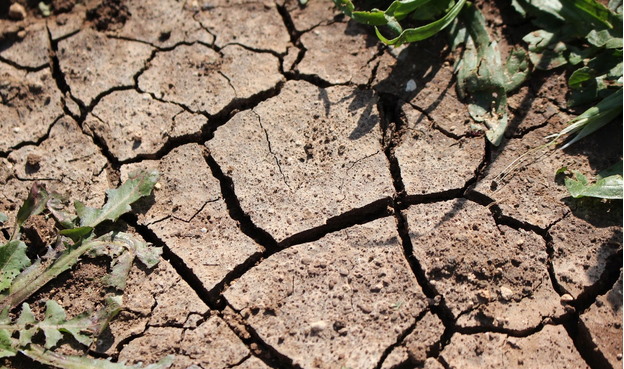The Impact of Climate Change on Soil Erosion
- Written by News Co Media

Soil is ultimately the bank of microorganisms, nutrients, and moisture that are critical to growing healthy food. But that is possible only under one condition – healthy soil. Ultimately, to ensure food safety and high nutritious value in the future, it’s necessary to consider soil preservation today.
The destruction of the top fertile soil layer by different types of water erosion, wind erosion, or erosion caused by unsustainable agricultural practices is one of the main threats to both soil health and food security.And although soil erosion occurs naturally on all continents and in all climates, intensive farming, deforestation, and global climate change severely accelerate this process. Close connection between soil erosion and climate change is becoming especially noticeable in the past few years. In this piece, we will explain how they are related, but first let’s briefly go through the types of soil erosion that threaten the land’s health.
Types of Soil Erosion
Soil degradation is most frequently caused either by water or by wind. Here is how that happens.
Water Erosion
Rainfall, rivers, lakes, and floods easily transport the particles of soil, washing away its top layer, making water one of the primary threats to soil health. The most frequent cause of soil degradation by water is rainfall. There are 4 types of soil erosion that rainfall can lead to:
- Splash erosion occurs as a result of raindrop basically bombarding the soil, scattering its tiny particles meters away
- Sheet erosion takes place after runoff
- Rill erosion develops when runoff turns into streams (rills)
- Gully erosion is the last stage of water erosion that manifests itself in the formation of large channels (gullies) through which the soil particles are carried away.
Another huge cause of soil erosion is the ocean. It results in coastal erosion, which can be significant to the extent of changing the shape of a coastline. This can affect both human settlements and coastal ecosystems.
Wind Erosion
Another powerful agent of erosion is wind since it constantly transports dust, sand, and ash. It’s especially evident in dry areas, where the wind blows sand against rocks with huge force, slowly polishing them until they are smooth and eventually wearing them away.
Wind erosion can cause irreversible damage in both long and short periods of time. Dust storms quickly sweep away the topsoil, sometimes carrying it away for hundreds of kilometers. Sometimes such dust settles covering whole bodies of water.
So how does climate change influence these types of soil erosion? And is there a way to manage this influence by any means? Visit this website for additional reading on erosion control.
Connection between Climate Change and Soil Health
Most case studies claim that the current and future climate change is a huge factor that will adversely affect soil erosion. The issue is the interconnection of temperature, precipitation, and erosion. And both temperature and precipitation regimes highly depend on the climate and the speed of its change. The temperature patterns, the amount of precipitation (rainwater) per particular period, evaporation – everything depends on the climate. And the faster the climate changes, the faster should be the development of solutions to mitigate the effects of this change.
One of such solutions is the no-till technology and reduced tillage practices that are becoming reliable management strategies for many farmers, especially for those concerned about soil health. To facilitate the effect of reduced tillage, agronomists can also apply effective nutrient and pesticide management plans in their practices. It will help not only to decrease soil degradation but also to preserve the quality of water and air.Besides, when speaking about reduced tillage in the context of global climate change, its main value is the decrease of greenhouse gas emissions (carbon dioxide, nitrous oxide, etc) and the sequestering of soil carbon.
Numerous researches put climate change on top of the list of factors that will drive increased soil erosion in the future. Relying on the current situation and the data on global climate change dynamics, scientists predict that soil erosion will continue increasing significantly in the next decades. That is why it’s critical that agricultural practices move towards sustainability and measures to soften the impact of global warming are taken. Only with this complex approach, the impact of climate change on soil erosion can be managed to preserve healthy lands.




